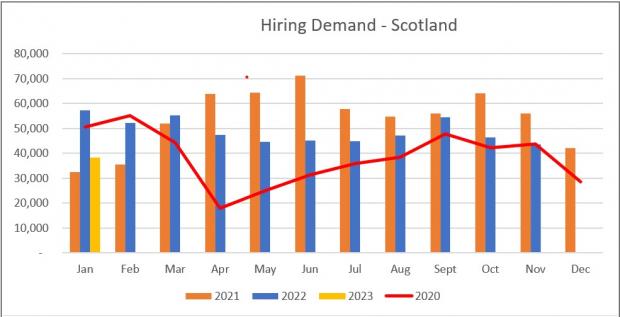
Writing in yesterday’s Herald, Gavin Mochan, managing director of s1jobs, believes there is reason for cautious optimism on the jobs front. With confirmation that the UK narrowly avoided falling into recession last year after a sharp decline in economic output during December, things may be starting to look up.
The latest estimates from the Office of National Statistics (ONS) show that the unemployment rate in Scotland was 3.3 per cent during the three months to the end of December. That was 0.2 percentage points lower than the previous three months and nearly a full point less than a year earlier.
Employers are holding their nerve as a potential slow-motion recession unfolds. The redundancy rate increased in the last three-month period and now stands at 3.5 per 1,000 employees, but outwith the last three months they are at their lowest since records began in 1995.
With employers expecting the dreaded recession to be shorter and less severe than initially feared, most are intent on retaining the skilled workforce they already have.
Scottish employers are also embracing employees over the age of 50 to help bridge the skills gap, with a 24% drop in unemployment in this age bracket compared to the year before. That said, 25 to 34-year-olds remain most attractive due to their greater experience than younger counterparts, while at the same time having enough “road” left in their career to make them suitable for upskilling.
A 3% increase in people across the UK working part-time is the equivalent of 207,000 more people doing so. More insightful is the 11% increase in those who are self-employed, but still part-time, as a way of maximising their income.

There was also a 4% increase in workers with second jobs, testament to the fact that people are having to offset the rising cost of living by working more. For many, part-time is the best way to retain some degree of work-life balance.
Demand from employers started the year in a subdued position with a total of 38,000 vacancies advertised online in January – a third lower than the year before. The hope in some quarters is that activity will heat up with dampening recessionary concerns making employees more likely to jump ship and look to move, rather than stay in a role just for security.

In terms of industry trends, there has been a significant increase in jobs in the technology and digital sectors in Scotland. This shift is a response to the high demand for tech talent in the modern economy. There have also been increases in healthcare, education, and renewable energy, which are expected to be major drivers of Scottish job growth in the coming years.


